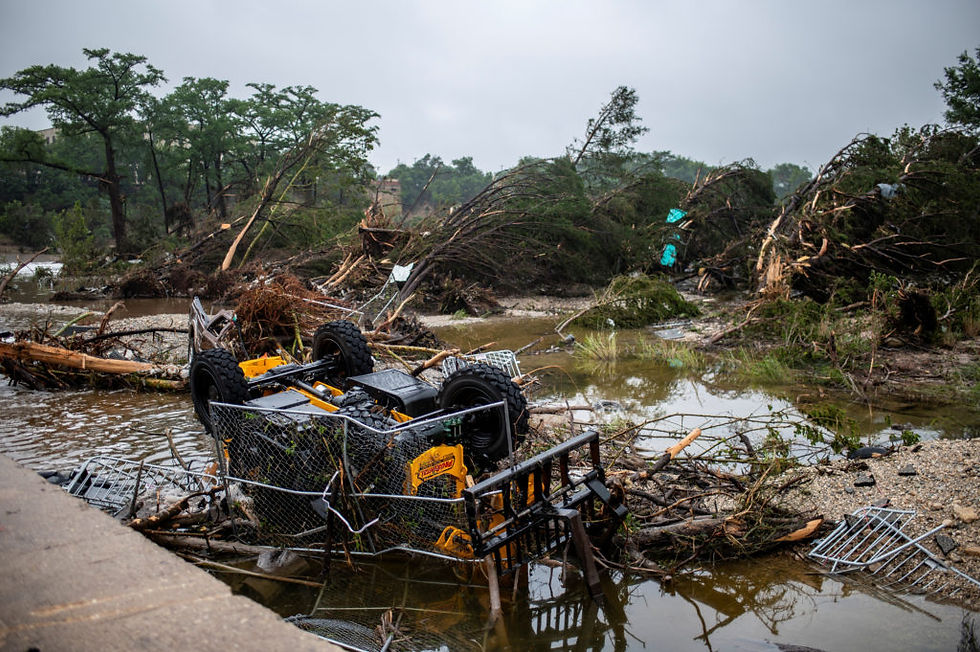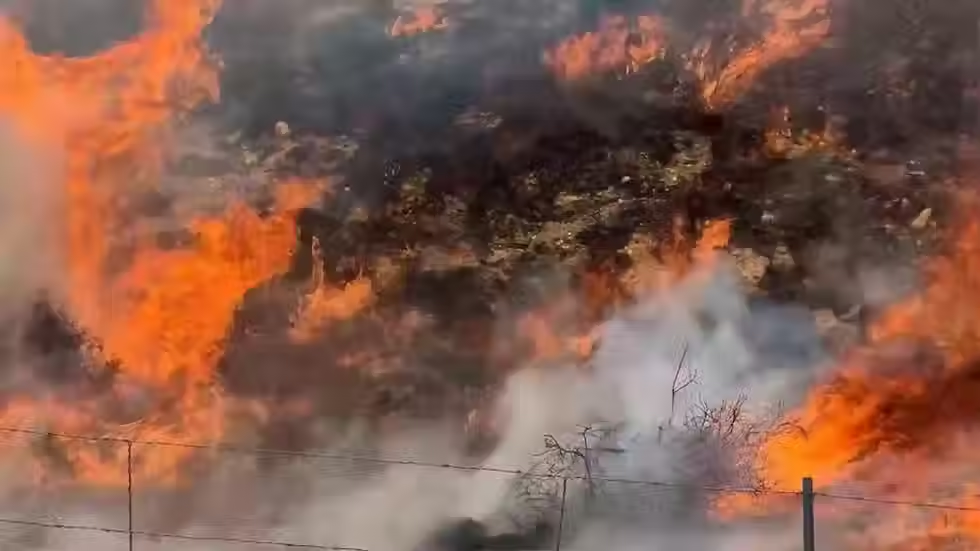Climate Crisis: America
- Proud Raksriaksorn
- Jul 16
- 5 min read
Climate change is taking its toll on every part of the planet, which is what this series aims to emphasise by shedding light on the areas around the globe that are most severely affected by climate change.
First, let’s shine our spotlight on the USA, where two states are currently battling two very different and seemingly unrelated natural disasters. Yet, they may not actually be as unrelated as they seem…

4th of July, Kerr County, Texas. At roughly 4 AM, the region was hit by a devastating flood as the Guadalupe river, one of the largest rivers in Texas, overflowed at alarming speeds. During what can only be described as a torrential storm, an unprecedented four months worth of rain fell in the space of just a few hours. The water travelled over 150m from the banks of the Guadalupe, and rose to a peak height of 10 metres within 2 hours, surpassing its previous record of 9.6 metres, set during another major flood in July 1987.
Climatologists have explained that warmer air is able to hold more moisture, leading to less frequent rains. That also means that when it does rain, it is much heavier because the clouds can hold more water before needing to rain. Another side effect of this is longer periods of dryness in between storms - AKA drought. And, because dry soil tends to harden, it’s not very good at absorbing water. So, when a huge volume of water falls quickly on an impermeable surface, the risk of flooding is greatly increased.
And that’s exactly what happened in Texas. The water rose nearly 8 metres in just 45 minutes - that’s roughly the height of a two-storey building. Most of the rainwater was residual moisture that came from Tropical Storm Barry, a cyclone that struck the eastern region of Mexico at the end of June (which also triggered flooding in the area).

In the early hours of a public holiday, many were caught off-guard; flash flood warnings were received too late or not received at all. Hundreds of wild animals have also been injured in the floods, and hundreds more have lost their lives. “Flash Flood Alley”, which encompasses Kerr County, bore the brunt of the disaster. Among the hardest hit is Camp Mystic, an all-girls summer camp where 27 campers and counsellors have tragically lost their lives. With over 120 confirmed casualties in total and over 170 still missing, our thoughts are with those who have lost family and friends or are still searching.


On the other end of the extreme, having just survived one of its largest and most destructive wildfires barely 6 months ago, California has once again been struck by flames. The largest of the fires, the Madre fire, has already burned through more than 80,000 acres of land in San Luis Obispo county. It started on Wednesday afternoon local time and, as of the 4th of July, has become California’s largest wildfire so far this year, easily overtaking the Palisades fire which burned just over 23,000 acres in January. The cause of the fire is still unknown. There are also several smaller fires burning in Northern California, including the Green Fire, Summit Fire, Jacket Fire, and Butler Fire. The smoke from these fires has drifted nearly 300 km from their origin, even visible in areas as far as Sacramento Valley.
And worse - this is just the beginning of California’s fire season. According to Wildfire Conservancy director Matt Rahn, “all the predictions are pointing to a much hotter, drier summer and fall.” After months of light rainfall following an unusually dry winter, there is now an abundance of dry vegetation just waiting to be ignited. Extreme heat, strong winds and plentiful fuel = the perfect recipe for a fire. Given these conditions, it is unfortunately almost certain that an intense and destructive wildfire season lies ahead of California.

And it’s not just California - wildfires have been popping up all over the Western states, such as Utah, Arizona and Colorado. The Grand Canyon in particular has been faced with extreme heat for the past few days, with temperatures soaring to a high of 46°C. The fire was started by lightning on Wednesday 9th July. As of Thursday, the flames remained “0% contained”, still expanding and rapidly moving towards Jacob Lake despite firefighters’ best attempts to control the flames. An evacuation order has been made, and around 500 visitors to the Canyon’s North Rim have already been successfully evacuated as of Friday. Additionally, lightning is also believed to be responsible for sparking two more fires in nearby Black Canyon, Colorado on Thursday. Despite also being described as “0% contained” by officials, visitors to Gunnison National Park have all been safely evacuated from the area.

As you may have already figured out, the correlation between these two events is, of course, none other than climate change. While not the sole cause of the disasters, it is undeniable that climate change exacerbated the conditions needed to bring them about. Warmer oceans linked to climate change likely increased the severity of Tropical Storm Barry, then in Texas, climate change worsened the droughts and intensified the rains; in the Western states, climate change was also behind the dry winter, followed by extreme heat this summer. The sudden onset of these disasters sends a clear message about the critical state of our climate. We are losing control - fast. And now, we are faced with a grim, unavoidable question:
How many more lives must be lost before we take action?
Credits:
Information -

Comments